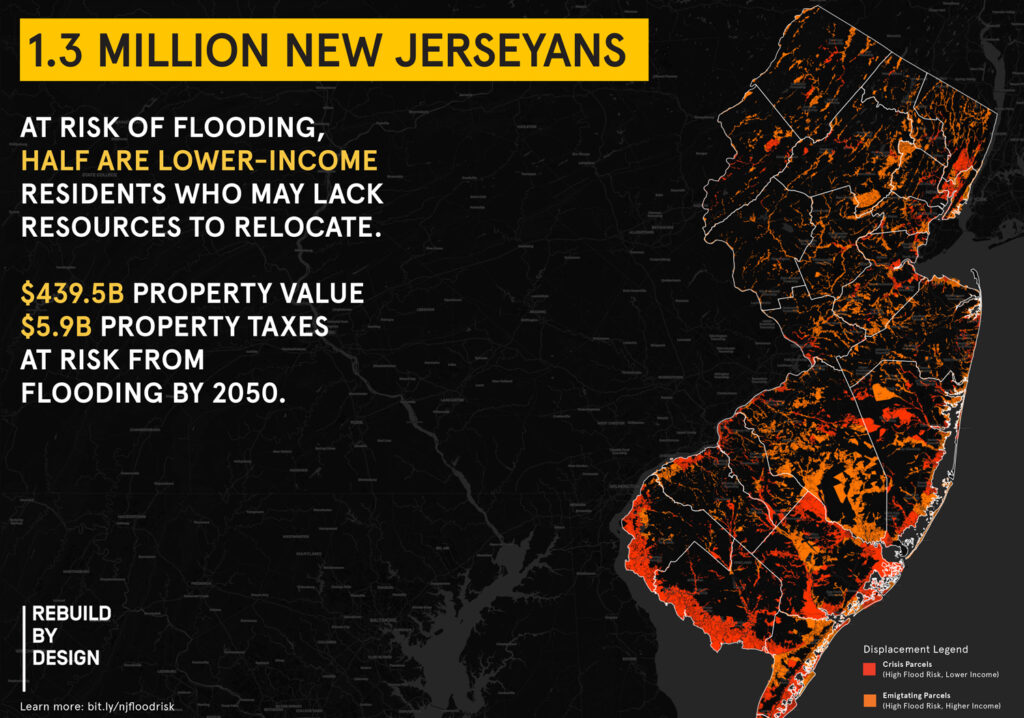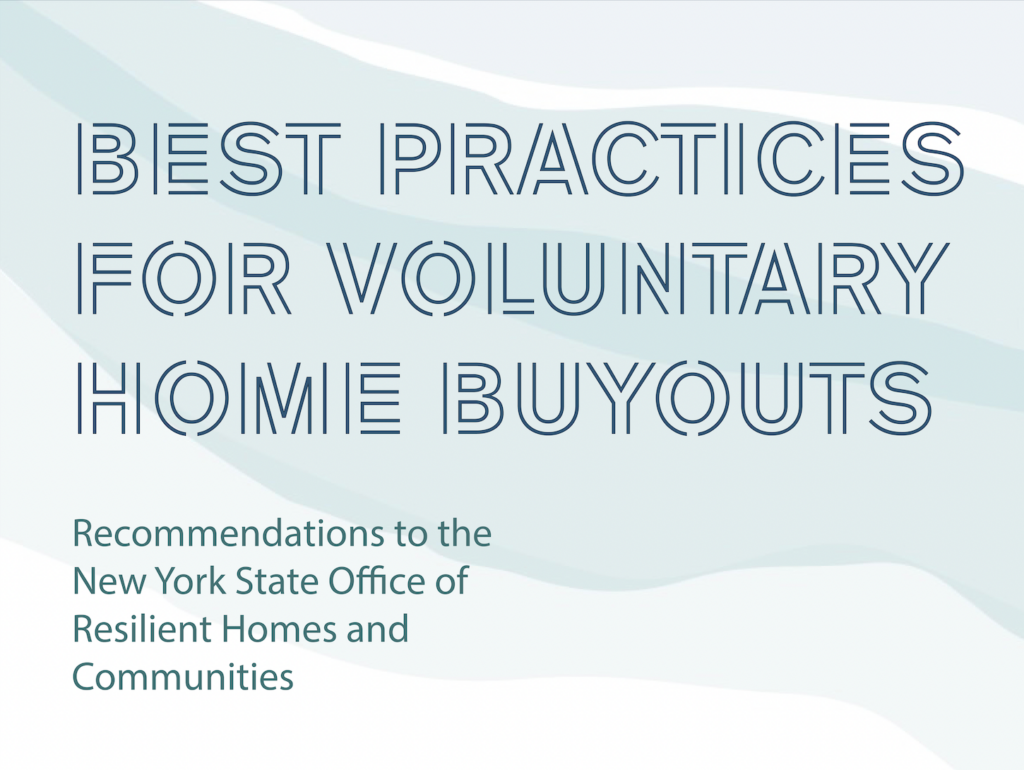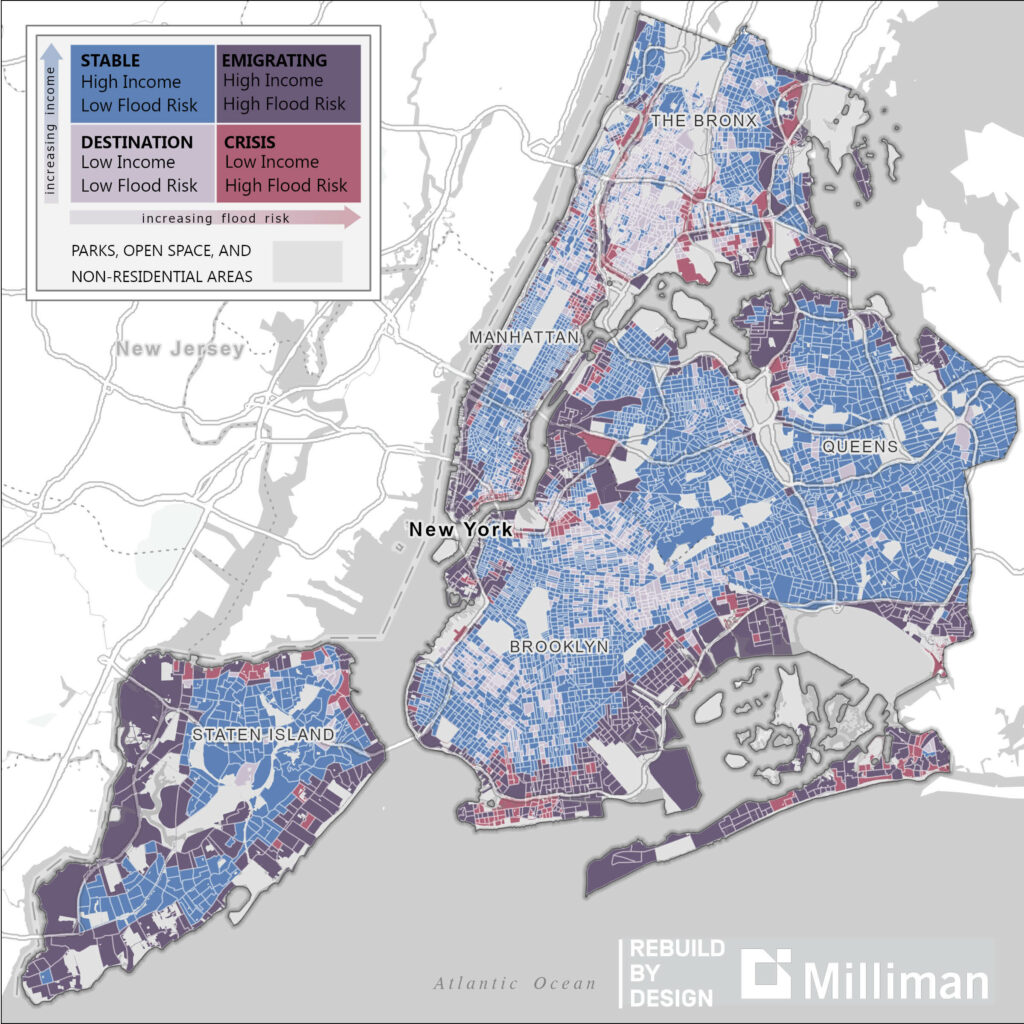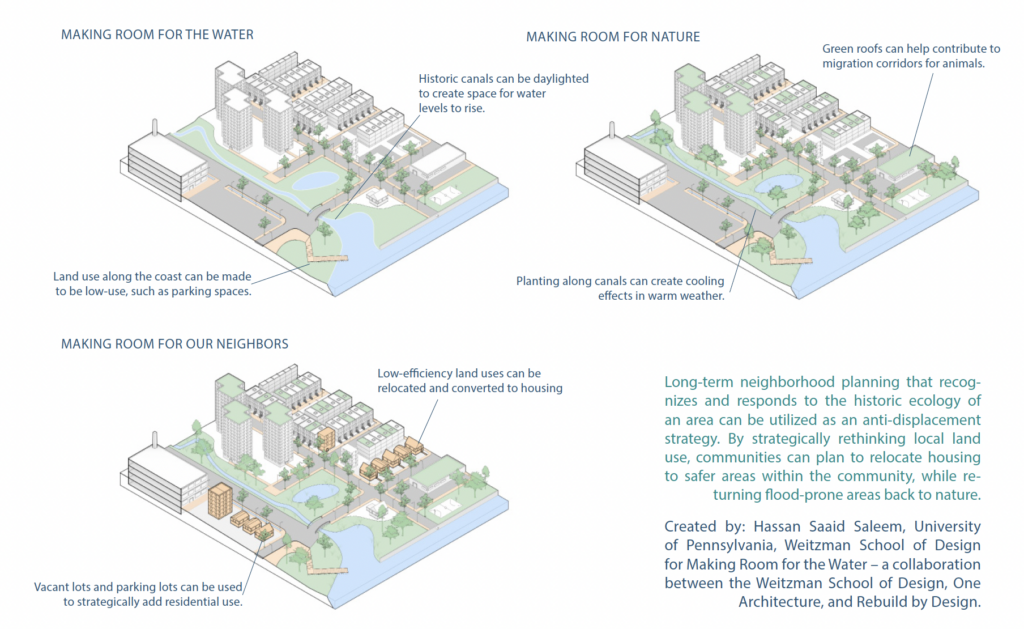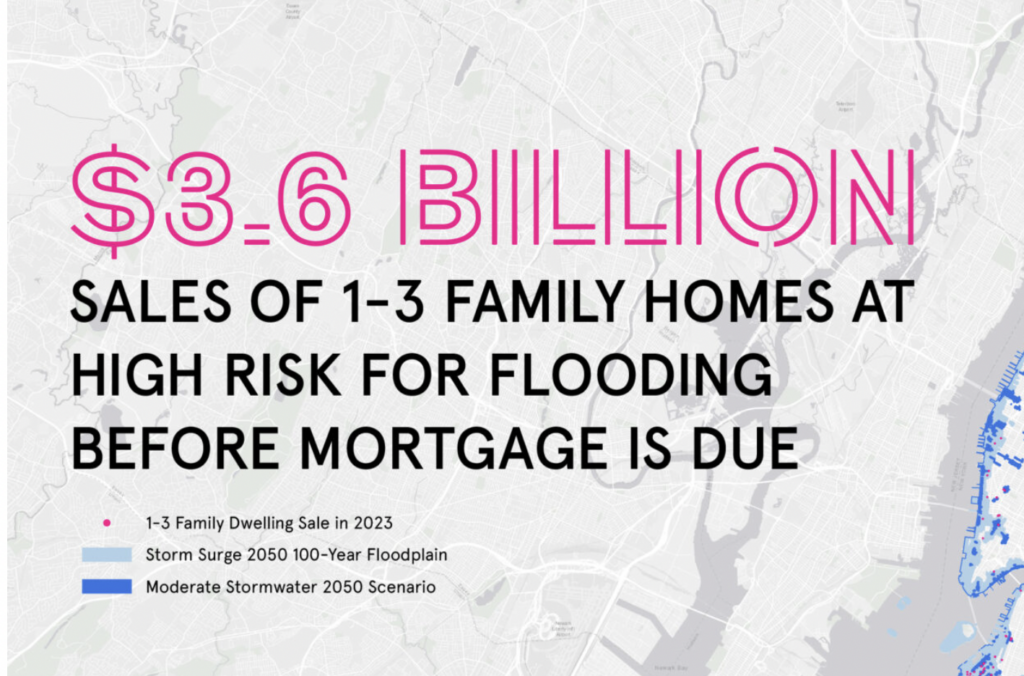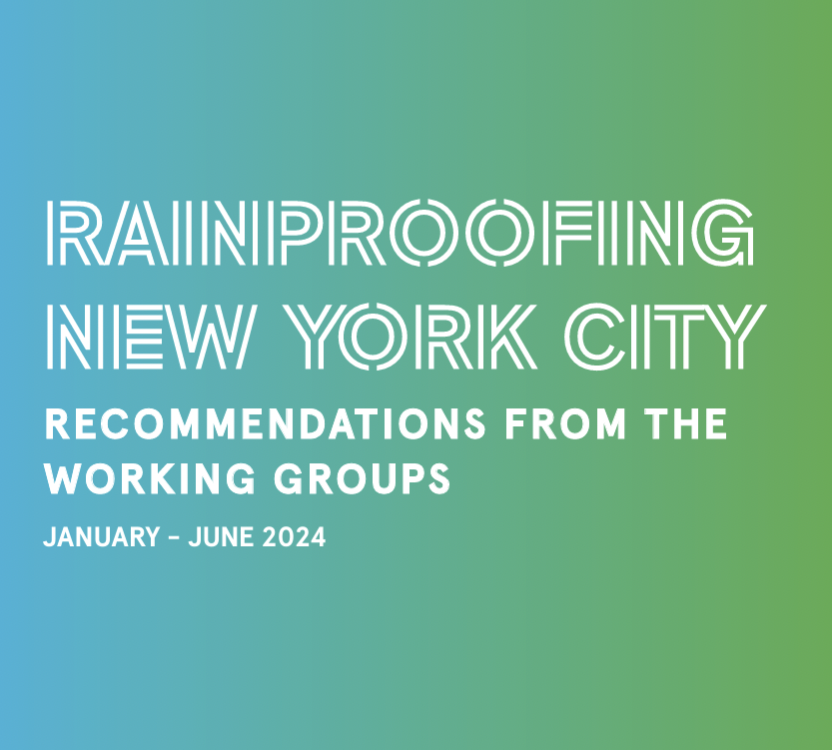Image: Oakwood Beach, Staten Island 2024 | Cameron Blaylock
CLIMATE RELOCATION, BUYOUTS, AND DISPLACEMENT
As storms become more severe, rainfall intensifies, and sea level rise creeps into our neighborhoods, communities will dramatically rethink where they choose to live, work, and play. While some communities may be able to adapt to more water, others may have to relocate.
Increasingly, communities are demanding their governments provide voluntary housing relocation programs as one of the tools to adapt to climate change. The design and implementation of these programs will have rippling effects in the communities that will be left and those where they will move. On a community scale, the social implications of breaking up tightly-knit communities, the land-use decisions of where to accommodate this population, and the budgetary decisions as to how to price property to adequately incentivize homeowners and renters, and ensure the constitutionality of property rights, will need to be addressed.
Through collaborative research and design, Rebuild by Design is developing tools to help identify the potential risk of displacement to households, build capacity of communities to plan for long term impacts, and identify best practices for climate buyout programs.
JUST RELEASED: A Graphic Novella ABOUT FLOODING AND RELOCATION
“Finding Ground” follows the experiences of a New York community impacted by flooding and the challenging conversations that emerge among neighbors. After a major storm hits, the flood forces an evacuation, and residents are confronted with a difficult decision to stay, and rebuild once again, or engage in the town’s new voluntary buyout program. Residents must ask themselves, “Can my family weather another storm? Can this relocation program help me build a better future? How can we make sure our voices are heard in future planning efforts?”. This is a story about making difficult decisions and individuals taking the initiative to plan for a future that reflects new climate realities.
This three-part graphic novella was born from a realization that blending storytelling and visual art, we can make these difficult conversations more approachable. Each chapter draws from real experiences and concerns voiced by residents, while also highlighting best practices that communities can advocate for, such as relocation services and support within buyout programs. These stories underscore the vital role of neighbors and trusted messengers in helping communities make hard decisions, heal, and move forward.
Explore the graphic novella here>>
Partners: University of Pennsylvania Weitzman School of Design and One Architecture & Urbanism
OUR RESEARCH AND ENGAGEMENT ON CLIMATE RELOCATION
Conversations about climate migration
Rebuild by Design hosts a conversation between Jake Bittle, author of The Great Displacement: Climate Change and the Next American Migration, and Christopher Flavelle, climate reporter for The New York Times.
Bittle and Flavelle explore how climate change has already transformed the fabric of communities in the U.S. and the difficult decisions households are forced into as disasters become a part of the everyday reality for many Americans.
Hosted in partnership with: The Institute for Public Knowledge at NYU, the Natural Resources Defense Council, the Climigration Network, the Climate Museum and The Nature Conservancy.
Resources from national experts
Even as climate change dominates the headlines, many of us still think about it in the future tense—we imagine that as global warming gets worse over the coming decades, millions of people will scatter around the world fleeing famine and rising seas. What we often don’t realize is that the consequences of climate change are already visible, right here in the United States. In communities across the country, climate disasters are pushing thousands of people away from their homes.
NRDC reviewed nearly 30 years of FEMA data on buyout funding and found that a typical buyout takes more than 5 years between a flood and the completion of a FEMA-funded buyout project. While every buyout project is different, one thing is clear: long wait times make buyouts less accessible, less equitable, and less effective for disaster mitigation and climate adaptation. This report describes approaches for improving the current system, as well as new buyout models being explored by FEMA, other federal agencies, and state and local governments.
This guidebook, developed by a creative team led by Scott Shigeoka and Mychal Estrada, offers insights on how to begin conversations about relocation – questions to ask yourself before you approach a community, phrases to use other than “managed retreat,” and actions and activities you can take to open up a conversation with curiosity and care. It is based on interviews with 40+ people with direct experience with climate risk and displacement.
Video: Strong, frequent heatwaves, storms, and droughts are here to stay, and more are on their way. Climate change demands we do things differently. Around the country, communities are relocating homes and businesses to safe, dry ground and creating green buffer zones that provide community amenities and slow down and store floodwaters when needed. By proactively working together, we can save lives, protect homes and businesses, and build a safer world for all of us – now and long into the future.
The product of a series of roundtable discussions among grassroots leaders from ten low-income, Black, Latinx, and Native American communities. They were convened by Anthropocene Alliance (A2) and The Climigration Network (CN) between February 23rd and August 1st, 2021 to address The Great American Climate Migration, the resettlement of some 30 million Americans over the next half-century due to climate change.
Strong, frequent heat waves, storms, and droughts are here to stay, and more are on their way. Climate change demands we do things differently. New York residents are teaming up to improve community safety and quality of life. In response to local disasters, two New York communities explore how they can use flood-damaged, vacant lots to create a safer future for themselves. Listen to residents and leaders from Edgemere in New York City and Sidney in Upstate New York talk about their vision for their community.
A team of scientists at The Nature Conservancy examined decades of research and practice from around the United States and developed a way to make decisions about flood risk solutions. They prioritized these solutions in tiers that would provide the greatest benefits to people and nature. See also the peer-reviewed publication: A new framework for flood adaptation: introducing the Flood Adaptation Hierarchy
The need for voluntary buyouts of storm-damaged properties is rising rapidly, but programs can be slow and inequitable. How can buyout programs be improved for residents and program staff? There is unlikely to be one ‘best’ way to administer buyouts across these contexts. This report therefore presents a range of variations so officials and communities can think about what is appropriate in their context.
The Nature Conservancy and the University of Delaware Disaster Research Center
These resources include research, reports and tools for climate adaptation.

